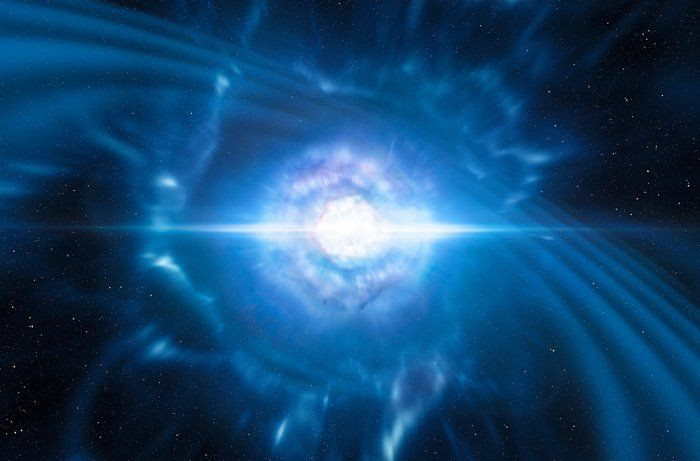LIGO Announcement: Neutron Stars Collide, Explode In Never-Before Observed Kilonova

Astronomers have observed a tremendous type of space collision for the first time and it was pure gold. And platinum.
When two old, massive stars exploded in supernovas, shedding their layers into the vastness of space, they left behind dense remnants called neutron stars. Although scientists have predicted what would happen when two neutron stars collided, they recently saw it for the first time, the European Southern Observatory announced Monday.
The merger created an explosion called a kilonova, which is 1,000 times more powerful than a regular nova and has been theorized for decades. The kilonova sent radioactive, heavy elements like gold and platinum shooting outward, blasting through space at one-fifth the speed of light, the equivalent of about 134 million miles per hour.
This phenomenon appeared right after sightings of both gravitational waves and short gamma ray bursts.
Gravitational waves are rippled disturbances we observe in space-time that result from humongous events like colliding neutron stars or black holes.
Scientists have believed that short gamma ray bursts come from neutron star mergers, but they are only now able to confirm this with their first sighting of the gravitational waves, short gamma ray bursts and kilonova occurring at roughly the same time.
“There are rare occasions when a scientist has the chance to witness a new era at its beginning,” one of the astronomers, Elena Pian, said in the ESO statement. “This is one such time.”
The collision happened 130 million light years from Earth, so it is the closest source of gravitational waves and short gamma ray bursts scientists have ever seen.
Previous observations of gravitational waves have come from black hole mergers, which create much stronger waves. It's possible, the ESO said, that the nearness of the neutron star collision was what made it visible to us on Earth.
Dozens of observatories around the world were watching the event, collecting data across the different wavelengths of light. That included the National Science Foundation’s Laser Interferometer Gravitational-Wave Observatory, or LIGO for short.
“When the spectrum appeared on our screens I realized that this was the most unusual transient event I’d ever seen,” Stephen Smartt, who was observing with the ESO’s New Technology Telescope, said in the statement. “I had never seen anything like it. Our data, along with data from other groups, proved to everyone that this was not a supernova or a foreground variable star, but was something quite remarkable.”
<iframe width="560" height="315" src="https://www.youtube.com/embed/x_Akn8fUBeQ" frameborder="0" allowfullscreen></iframe>
NASA telescopes on both the ground and in space contributed to the discovery, the space agency said in a statement. That included the Hubble Space Telescope, which was looking at the movement and chemical makeup of the debris that was forced outward when the two neutron stars collided.
These neutron star crashes might be the main source for the universe’s heaviest elements.
“This is the one we’ve all been waiting for,” LIGO Laboratory executive director David Reitze said in the NASA statement. “Neutron star mergers produce a wide variety of light because the objects form a maelstrom of hot debris when they collide.”
According to NASA, the neutron stars that caused the kilonova had more mass than the sun but were about the size of Washington, D.C. They were orbiting together, moving faster and faster around one another until they slammed together.
Paul Hertz, the director of NASA’s Astrophysics Division, said, “This is extremely exciting science.”
© Copyright IBTimes 2025. All rights reserved.



















